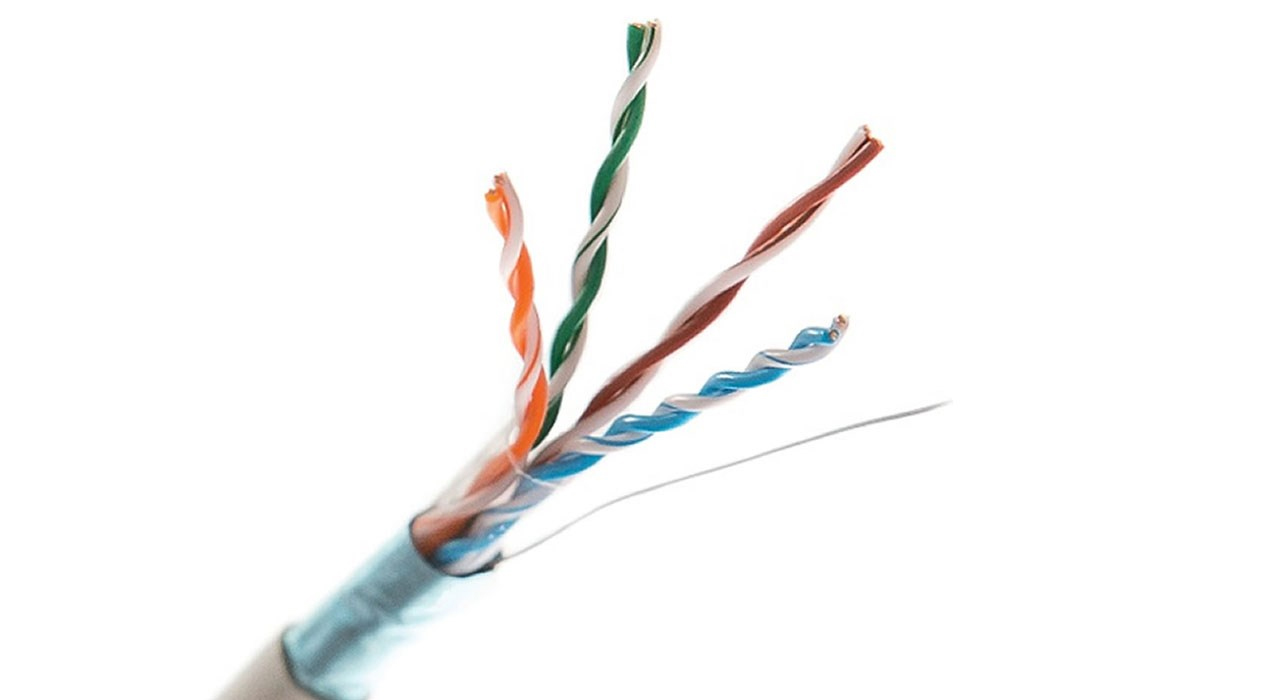network cable
A communication platform is a cable that is used to exchange data, share and connect devices in a network to each other or to other networks. According to the type of connection, protection and network size, the network cables are diverse (such as coaxial cable, fiber optic cable, twisted pair cable) and that is why the devices can be connected in a short distance of a few meters (for example, by an Ethernet cable) or to be connected over long distances (for example via the Internet).
Twisted pair cable
It is an inexpensive cable that is easy to install and is ideal for wired LANs, and is lighter and more flexible than coaxial. It consists of two insulated copper wires that are twisted together to reduce noise and placed in an insulated sheath. In the telephone wire, which is a type of this cable, the RJ11 connector is used, but in the network cable, a connector with the number RJ45 (the plugs are for T.P. cables) is used, which has eight places for eight strands of wire.
Types of network cable in terms of coating
The cable jacket protects the network cable like a shield from external threats, such as electrical interference, interfering signals, shocks, and possible strains on the cable. This cover includes PVC cover, aluminum foil, copper shield and silk thread.
Network cable naming method
The network cable is divided into several categories based on bandwidth, speed, noise immunity, coating material, etc. But normally, network cables are divided into categories Cat1 to Cat8. These categories start from Cat1 (abbreviated Category 1) and reach Cat8. The higher the category of network cables, the better their manufacturing technology and, as a result, their data transfer speed, bandwidth and noise immunity.
The naming and classification of each network cable is done according to the upgrades and improvements in which the cable is created.
For example, the Cat5 cable became Cat5e by making several improvements in its performance, the letter e at the end of CAT5e means Enhanced or improved, because the data transfer speed increased from 100 Mbps to 1000 Mbps. We also see this case in other Cat8, Cat7, Cat6 categories, for example, in Cat6a cable, the meaning of a at the end of it is Augmented, because the bandwidth in Cat6a cable has been increased from 250 MHz to 500 MHz, and Cat6a network cable it has been created. When there are many changes in a network cable, a new category is created. Smaller changes applied to each category create an improved (e) or enhanced (a) version.
 Controller
Controller


